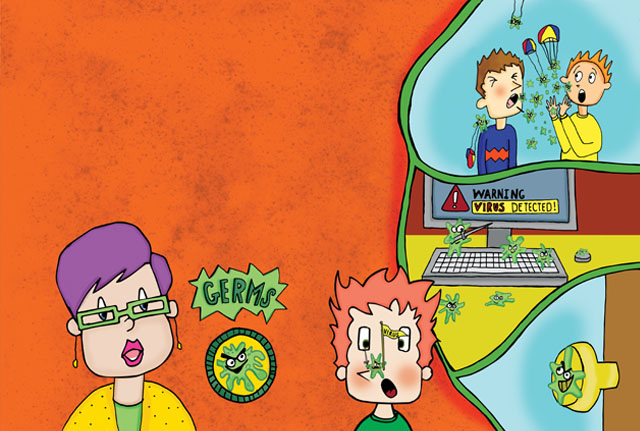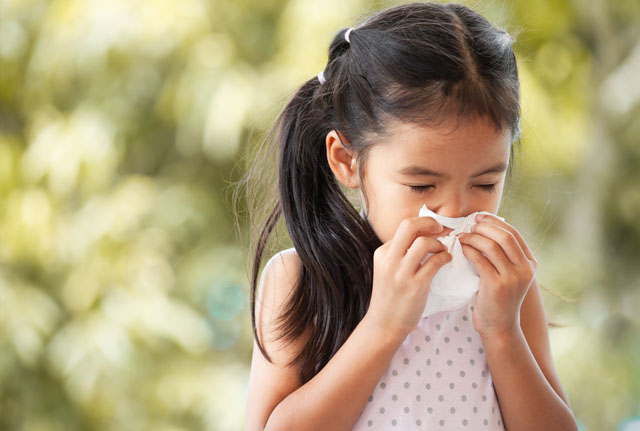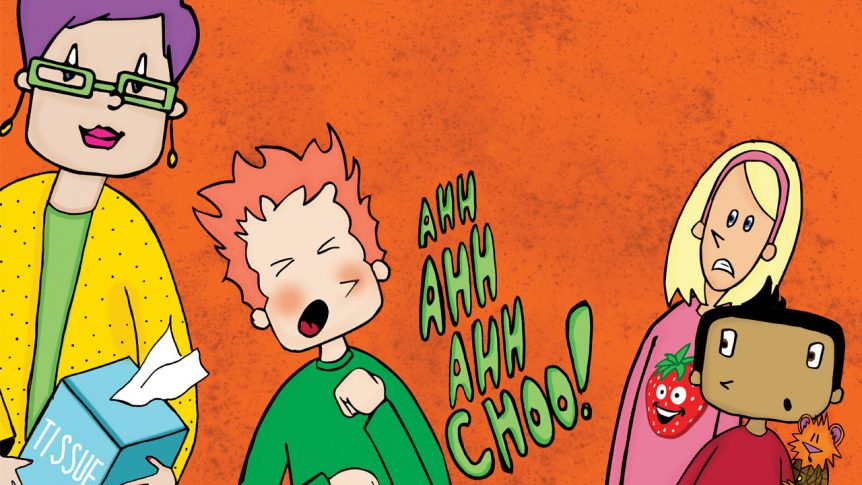It is springtime once again! The days are sunnier, the birds are singing louder, and the flowers are beginning to bloom. While this is happening, something else that’s not so good begins: allergies! Each spring, summer, and fall, plants release tiny pollen grains to fertilize other plants of the same species. Most of the pollens that cause allergic reactions come from trees, weeds and grasses.
Students battle allergies and runny noses abound. And even though our noses run like leaky faucets, we’re also swallowing approximately a quart of snot each day too. Just think about that when you have the sniffles; yuck!

Here’s a fun fact about seasonal allergies. They are often called Hay Fever. Despite its name, hay fever does not mean that the person is allergic to hay nor has a fever. Hay is hardly ever an allergen, and fever is not a symptom. Instead, it’s the side effects of allergies.

The common cold is often mistaken with seasonal allergies. A cold is a virus that your immune system attacks when it enters your body. The symptoms of a cold are the effects of the virus being destroyed. Colds can last a couple of weeks and are highly contagious. You can catch a cold from a handshake, touching a surface that has germs or by a cough or sneeze from an infected person. An allergy is an overactive immune response. Your body mistakenly attacks harmless matters, such as pollen and animal dander, thinking these are germs; your body then reacts as if you had a cold. You cannot catch an allergy from someone else; they are not contagious.
While germs are not being spread because students have allergies, germs are deposited on tissues and hands when students sneeze, cough, and blow their noses. Allergy season is an excellent opportunity to teach students about how germs spread and the importance of proper handwashing.
So why do some people suffer with seasonal allergies more than others? Allergies usually, but not always, show up for the first time during childhood. Allergies tend to run in families, so genetics may be one culprit. In fact, errors in a gene that helps regulate the immune system are associated with higher rates of allergies. The environment you grow up in matters, too. Being exposed to an allergen as a baby makes you less likely to actually develop an allergy to it. People who grow up on farms, in big families, and in the developing world also tend to have fewer allergies, although there are plenty of exceptions, partly thanks to genetics.

Although colds and seasonal allergies may share some of the same symptoms, they are very different diseases. It’s a good time to join the Fuddlebrook School students as they learn how they get the common cold. The story teaches students how to deal with a runny nose, coughs, and sneezing while preventing the spread of germs regardless of whether they are virus induced or pollen induced. Using Liza’s Glittery Germs lab activity, students will “see” germs and how they are passed from one person to another. This lesson reinforces good hand washing and cold etiquette as students enjoy a fun activity about the yucky side of snot.

